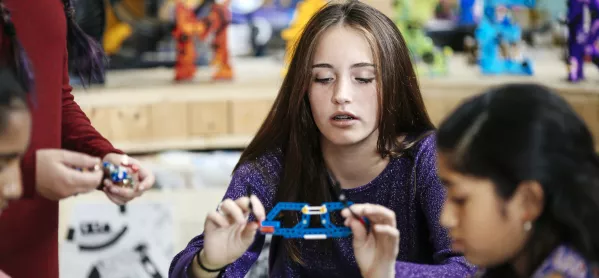What would be the difference if schools transitioned from Stem to Steam, adding arts subjects to the more traditional line-up of science, technology, engineering and maths?
While Stem teaching is fully embedded in schools, there is a growing nervousness about better preparing students for an unpredictable but tech-driven future. Incorporating arts subjects may help us to provide a deeper insight into key skills such as creative critical thinking.
The value of art
The real difference between Stem and Steam lies in the opportunities for development. The arts and social sciences can build essential interpretative skills. They teach a student how to look beyond the face value of a topic or piece of technology, how to make critical judgements about improving a design, and how the process of trial and error is invaluable in making a product the best it can be.
Whether today’s students go on to become designers, doctors, or even politicians, we know that the challenges they face will demand creative solutions. We should expect that many of those solutions, whether technology-based or not, will be pioneered by someone skilled in creative critical thinking.
Yet, although Steam clearly benefits students, it can be challenging to think how to incorporate the arts into other lesson plans. Here are some starting points.
A new way of working
It is important to see real results from a child’s efforts. However, rather than completing one task and moving straight onto the next, maybe we should begin to think of students’ work like an artist’s.
Artists are known for their drive for perfection, believing that a project can always be improved and is ultimately never finished. Applying this to the classroom, and introducing robotics and hands-on learning tools, brings endless opportunities for pupils to start and then revisit projects throughout the week or even the term.
Working in this open-ended way can teach a child the key skills of determination, experimentation and creative critical thinking. Their only time limitation should be the bell at the end of the school day.
Cross-curricular collaboration
Steam also affords teachers the opportunity to use resources in more than one subject. For example, you can incorporate a number of subjects when learning about earthquakes: geography, to explore where in the world earthquakes take place; science, to learn about how an earthquake occurs; maths, to calculate the impact it can have on
housing structures; and coding, to build and program models to test whether housing can withstand an earthquake. The art of creativity comes into play by trialling and testing different models until the most effective solution has been identified.
Resources that are adaptable to many subjects make it easier for teachers to consistently emphasise the skills that Steam aims to teach children. They also give children, no matter their age or ability, the autonomy to experiment, create and redesign across a variety of topics, meaning that their skills are constantly revisited and strengthened.
21st-century skills
The additional creative critical-thinking skills gained through incorporating arts into Stem subjects are invaluable for 21st-century students. While they may be playing with technology right now, some day they will be the designers, the programmers and the critics. Therefore, it is vital to increase engagement with Steam subjects by shifting the emphasis in the classroom from “work” to “challenges”.
We have fully embraced Stem into our national curriculum; now it is time to embrace the next shift in education by transitioning to Steam, encouraging the development of key creative and critical skills - all while having fun, too.
This article was written by the LEGO® Education team. For resources, and free curriculum support and lesson inspiration, visit www.LEGOeducation.co.uk

